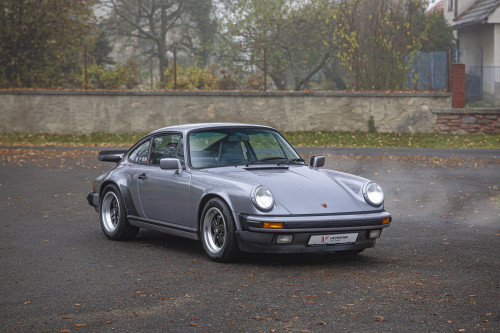French carmaker Société Anonyme des Automobiles Alpine traces its roots to the middle 1950s, when Dieppe mechanic Jean Rédélé achieved modest success in events like the Mille Miglia and Le Mans by modifying the humble 747-cc Renault 4CV for rallying and racing.
Alpine's first car, the Michelotti-styled A106, was an early pioneer of fiberglass, and with its rigid chassis, 5-speed transmission, and rear-mounted 4CV powertrain, it furthered the company's competition prowess. The Dauphine-based A108 appeared in 1960 in both coupe and cabriolet form and served as a stopgap between the A106 and what would ultimately bring Alpine its greatest accolades—the A110.
By this point, Renault had begun unofficially to claim Alpine as its official performance partner, and when the A110 debuted at the 1962 Paris Auto Salon to much fanfare, it was already packaged with the latest Renault mechanical bits, now from the R8.
The A110 followed the same basic recipe as its predecessors, with a lithe, attractive fiberglass body atop a steel tubular backbone chassis, and its looks promised something much more aggressive.
The A110 was never one to claim brute force as its chief source of motive power, but how it put that power to the ground on the rally surfaces of Europe was to become its chief strength. Its light curb weight, stiff chassis, rear-mount engine, and rear-wheel drive all combined to make A110s French rally darlings, particularly on any surface made slick by rain, snow, ice, or any combination of the three.
The rally successes continued, though rather than class wins, the cars were beginning to vie for outright victories. Notable was Alpine’s overall victory in the 1968 Coupes des Alpes. In the International Championship for Manufacturers, against competition from Porsche, Lancia, Ford, and others, Alpines dominated.
Road car production continued, not just in France, but under license at factories around the world, and while its racing days were past, nearly 8,000 A110s would make their way onto the road before the A310 fully succeeded it.
The Alpine A110 represents an interesting period in French automotive and motorsport history, and its “little engine that could” heritage, started by one man in a small Dieppe garage in the 1950s, proved itself completely true in the mountain passes of Europe’s toughest rallies.
This 1977 Renault Alpine A110 1400, chassis BF1788, production unit no 6.
One of the most famous racing cars of all times. The A110 1400 version was build in 1977 and 1978 in Renault's Spanish factory FASA Renault. Only 170 units were built. This car is unit no 6. The car was completely restored and the majority of the parts are new. The car has been slightly modified to enhance its practicality, performance and reliability.
The Alpine Renault 1397 ccm 4-Cylinder Turbo Engine has been modified to 290 hp (measured). The majority of the parts are new: single-piece fibreglass body, 5-speed manual gearbox, Renault Gordini axles, 4-wheel independent Öhlins Racing suspension with adjustable ride height, 4-wheel ventilated disc brakes, Gotti aluminium-steel rims.
The car finish (interior/exterior) can be tailor-made to the customer's preference.
| Production date | 06.06.1977 |
|---|---|
| Body Type | Coupé |
| Engine | 1.397 ccm, I4, 290 PS |
| transmission | Manual |
| Steering | Left Hand Drive |
|---|---|
| Layout | Rear Wheel Drive |
| Color - exterior | Blue |
| Color - interior | Black |
| Miles/Kilometers shown | 35.000 kms |
|---|---|
| Chassis / VIN | BF1788 |
| Location - Country | Slovakia |
| Location - City | Nove Mesto nad Vahom |
2-door coupe body type; RWD (rear-wheel drive), manual 5-speed gearbox; gasoline (petrol) engine with displacement: 1397 cm3, advertised power: 290 hp; characteristic dimensions: outside length: 3857 mm, width: 1529 mm, wheelbase: 2100 mm; reference weights: base curb weight: 695 kg

Písek, Czechia

Jablonec nad Nisou, Czechia

Jablonec nad Nisou, Czechia

Písek, CZ

Písek, CZ

Písek, CZ
Auctomobile
We have added pictures from the car rebuilt into the gallery.